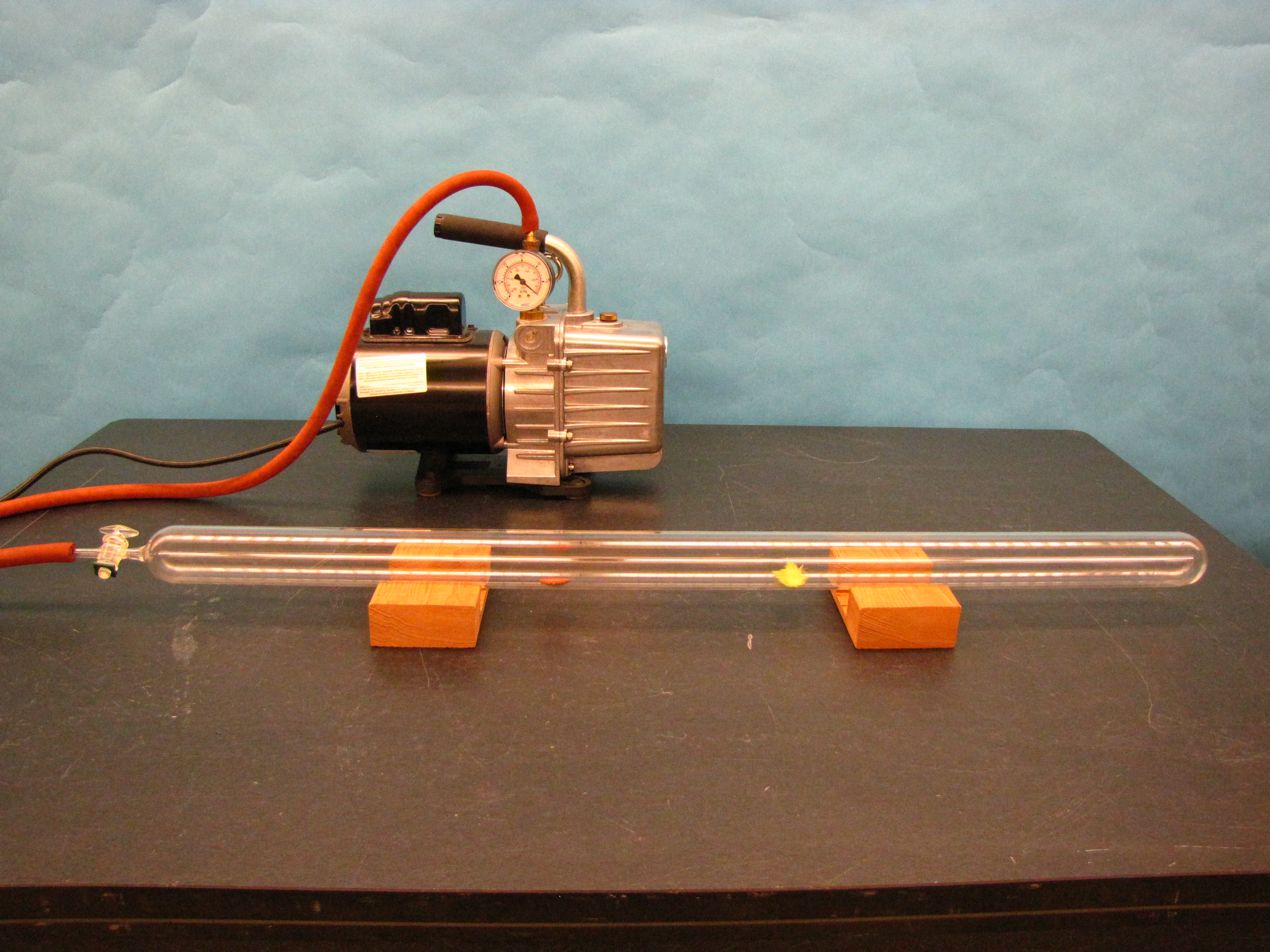Demos: 1K-11 Coin and Feather

A coin and a small, yellow feather are inside a closed glass tube, one end of which has a stop-cock for allowing air to pass in and out of the tube. When the stop-cock is connected to a vacuum pump and the air withdrawn, both the coin and the feather will fall together when the tube in inverted. When air is allowed back into the tube, the coin falls much faster than the feather, as expected, because of air friction.
Directions: Remove the hose from the stop-cock, making sure that the latter is open so that air at ambient pressure is inside in the tube. This will insure a different time of fall. To have the two fall together, attach the rubber hose from the vacuum pump to the stop cock, make sure the stop cock is open, and then turn on the vacuum pump. Wait about a minute or until you no longer hear the “gurgling” sound from the pump. Close the stop cock, turn off the pump, then remove the hose. Now there is vacuum inside the tube and when inverted, the two objects fall together.
Suggestions for presentation: Ask the students which will fall faster--a coin or a feather? Since most will answer correctly that it is the coin, demonstrate that this is indeed the case. (Because of the size limitations on the apparatus, students in the back of the room might not be able to see clearly what is happening. One suggestion is to move about the room, continually tipping the tube to show how the objects fall.)
Applications: Here is a good opportunity to discuss the role of weight and surface area in matters of air friction. This activity should be done in conjunction with 1K-11, the Terminal Velocity w/Filters Demo.
Last Updated: Nov 30, 2023 11:25 AM